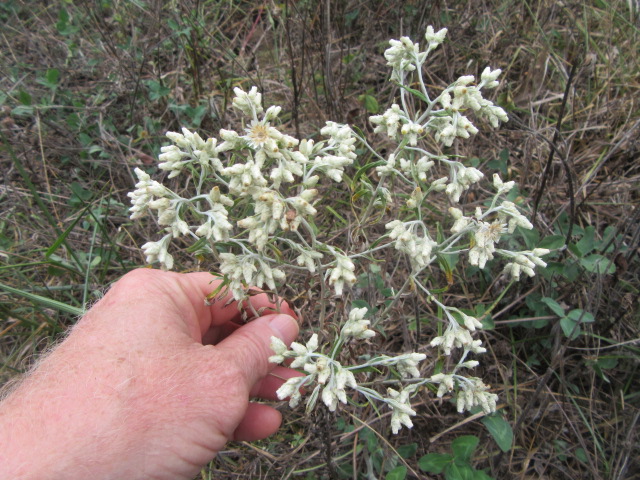
Pseudognaphalium obtusifolia (Sweet Everlasting) on 10-6-23, #964-6.
Hello everyone! I hope this post finds you well. I went to the south hayfield on October 6th to have another look at the Erigeron annuus (Annual Fleabane). I think I have been mistaken, even though I was fairly certain before, in identifying the Erigeron in the south hayfield as E. annuus. Now I am 60/40 in favor of E. strigosus (Daisy Fleabane). GEEZ!
Anyway, this post is not about Erigeron…
I had intended to stay in the front part of the south hayfield to avoid the velcro-like seeds of the Desmodium, but one plant led to another. The next thing I knew my pants were covered AGAIN so it was no use avoiding them any longer. I looked ahead and I spotted something that looked somewhat odd in the distance. It definitely wasn’t an aster of any kind… I was maybe 60 feet from it, so I had to keep going. Right through the Desmodium…
I took a few photos of the top of this weird plant I had never seen before. I wondered how it escaped me before and realized perhaps I was farther out the in the hayfield in this section. This plant was closer to the blackberry jungle in what had been previously mowed earlier in the summer. This path was mowed just before the drought, so it was still fairly short. Here this plant was growing right in plain sight with very little else growing around it. Hmmm…
Once I returned back at the house and removed the unwanted hitchhikers on my pants, I went into the house and turned on the computer. I uploaded the best photo of the mystery plant on iNaturalist and it suggested Pseudognaphalium obtusifolia (Sweet Everlasting).
I did more reading about this species and information said it had a faint scent of maple syrup. Well, I had to check that out and get more photos which led to ANOTHER trip to the south hayfield to get another dose of Tick Trefoil seeds…
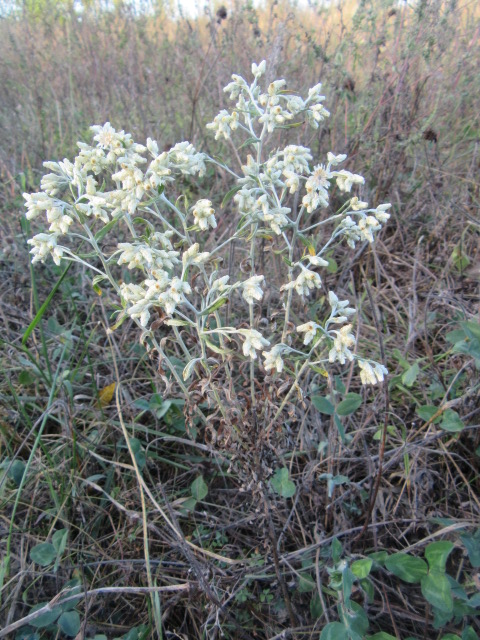
Pseudognaphalium obtusifolia (Sweet Everlasting) on 10-6-23, #964-7.
All the lower leaves were dried up, so I squeezed one of the weird fuzzy flowers to see if there was a scent. Well, I didn’t notice any smell at all, so I crushed some of the dried leaves and took another whiff. Well, that time there was definitely a faint scent of maple syrup. Information online says the smell is persistent while others say it is very faint. I didn’t really notice any scent with the upper leaves within the inflorescence…
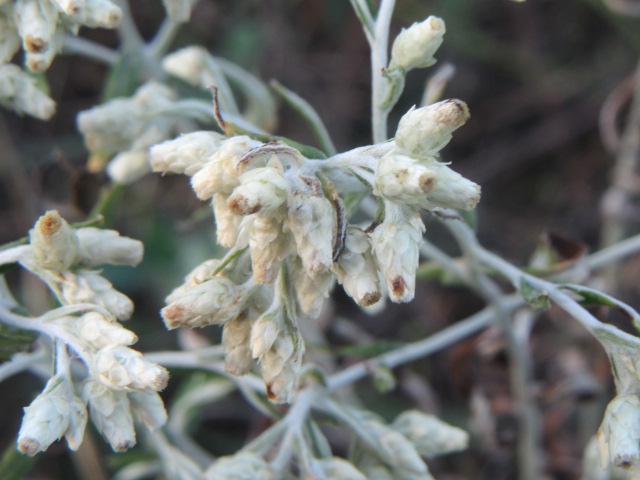
Pseudognaphalium obtusifolia (Sweet Everlasting) on 10-6-23, #964-9.
I’m not sure I have ever seen more weird flower heads than this… Being a member of the plant family Asteraceae you would expect something completely different. Well, I suppose the same could be said for Erechtites hieraciifolius (Fireweed) and Lactuca species (wild lettuces). They have no ray petals and the disc flowers are barely sticking out of the top. The flowers are surrounded by many layers of tight involucral bracts. This species is similar to that but the bracts (phyllaries) are very wooly…
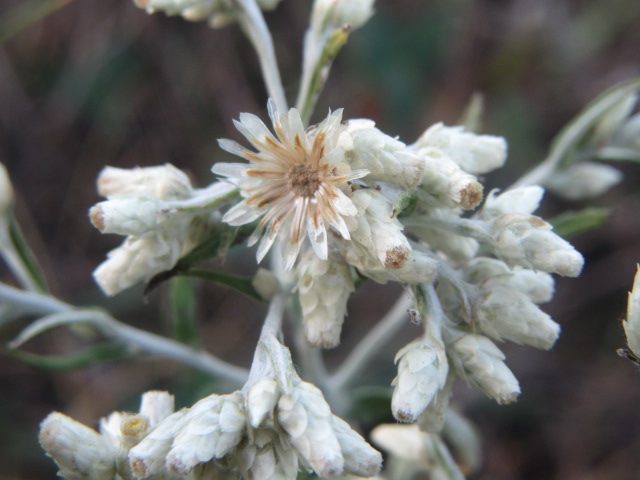
Pseudognaphalium obtusifolia (Sweet Everlasting) on 10-6-23, #964-10.
In the above photo, what appears to be a flower is not a flower. As the flowers mature, the head swells and the surrounding bracts open up for the seeds to disperse. Hmmm… Maybe I should collect some seeds to sow closer to the house. That way I can avoid walking through the weed seeds this time of the year.
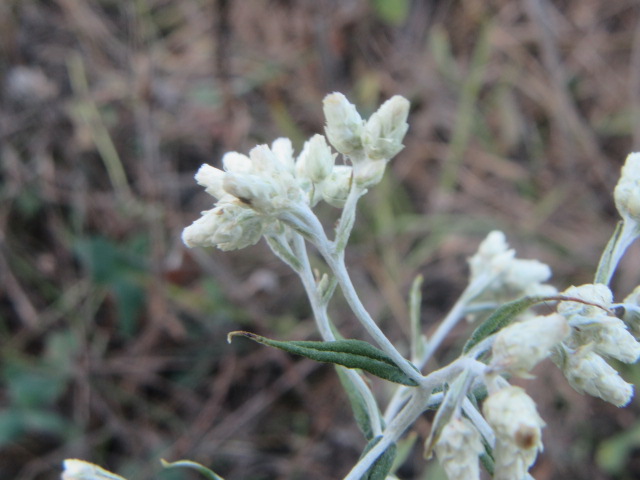
Pseudognaphalium obtusifolia (Sweet Everlasting) on 10-6-23, #964-11.
Pseudognaphalium obtusifolia, pronounced soo-doh-naf-FAY-lee-um ob-too-sih-FOH-lee-um, is a native wildflower to the central to eastern part of the United States and Canada. Besides the common name Sweet Everlasting, it is also known as Blunt-Leaved Rabbit Tobacco, Cat’s Foot, Fragrant Cudweed, Fragrant Everlasting, Fragrant Rabbit Tobacco, Indian Posy, Life-Everlasting, Old Field Balsam, Rabbit Tobacco, Sweet Cudweed, White Balsam, and probably others.
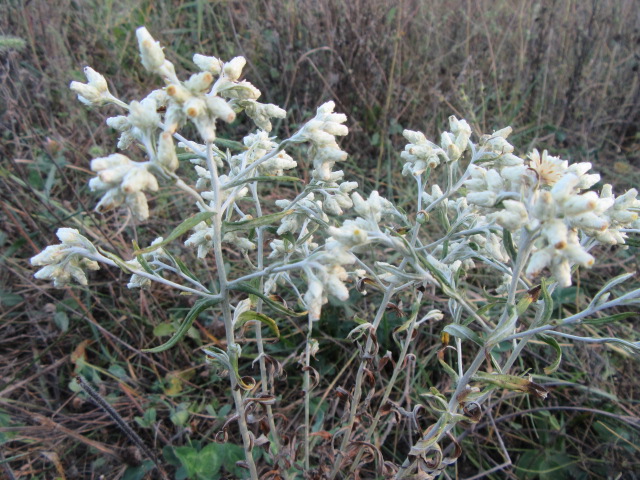
Pseudognaphalium obtusifolia (Sweet Everlasting) on 10-6-23, #964-12.
The Wikipedia page for this species lists what several Native American Tribes used it for in one way or another.
I do have a page for this species which you can view by clicking HERE. There are several links to other websites for proper ID and further reading.
I am always amazed when I find a new species, especially an oddity like this. So far in 2023, I have identified 13 new wildflower species, 4 butterflies and moths, and 4 other insects… Not bad for a very hot and dry summer considering I didn’t hardly go wildflower hunting for a few months (except for around the yard). Two of the wildflower species were photographed in 2018, but they weren’t properly identified this year…
That’s it for this post! As always, be safe, stay positive, and always be thankful!